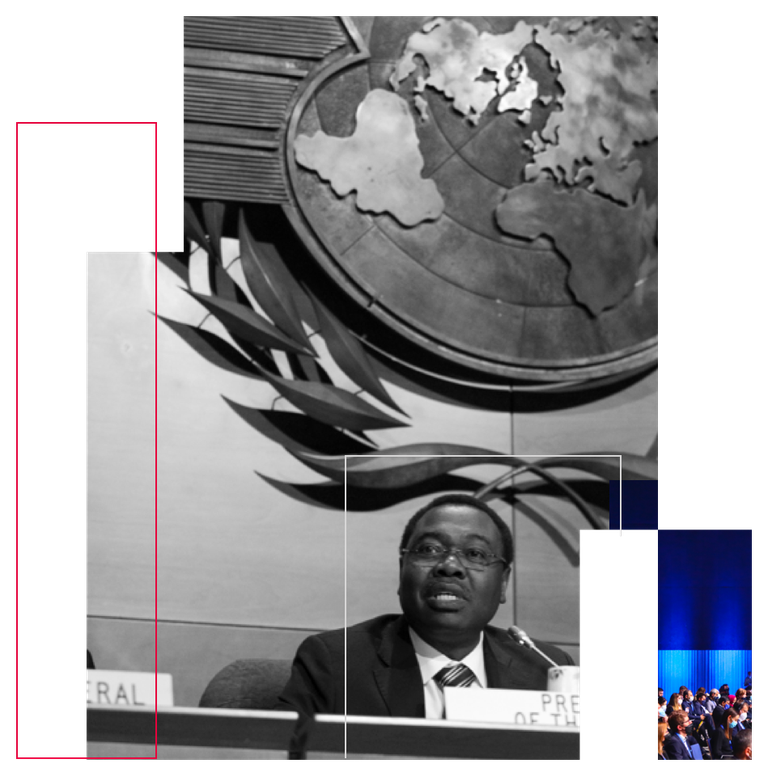“In 1902, the physical barrier separating the Dominion of Canada and the Commonwealth of Australia was bridged by way of a submarine cable, bringing the two largest settlement colonies in the British Empire into direct telegraphic contact.” A master’s student at the University of Sydney introduced his thesis topic with this statement in 1986. That student’s 268-page thesis delved into the origins and frictions around the laying of this cable, which was “the first public work undertaken jointly by Great Britain, Canada, New Zealand and the Australian colonies.”1
As the student traced, the cable arose from Australian and Canadian proposals that first emerged in the 1880s. The Canadian plan for a connecting Pacific cable was suggested by the chief engineer of the Canadian Pacific Railway, Sandford Fleming. Despite opposition from the major British-based global cable company, the Eastern & Associated, British politicians from the mid-1890s saw the Pacific cable as key to creating an “All-Red Route” around the world. Cables landing on British imperial or colonial soil would now circumnavigate the globe. For British officials ever more suspicious of their German rivals, such communications security seemed vital.
Canadian communications were inseparable from broader imperial, colonial and global politics, as this student had shown. That student is the current premier of British Columbia, John J. Horgan. No one ever seems to have asked Horgan what political lessons he drew from his thesis. But it suggests that the history of Canadian communications can hold relevance for contemporary politics.
History theses such as Horgan’s raise an even broader question: how has Canada tried to accommodate the dominant players in international communications, whether Great Britain or, later, the United States? As this essay will show, Canada chose to remain a political player in communications, unlike other middle powers such as Switzerland. Even more interestingly, Canada chose to act politically in communications at the same time as it acted very differently in other new technological realms such as aviation. In the mid-1940s, Canada chose to act like Switzerland in aviation. Why not in communications?
To answer that question, this essay will focus on Canada’s role in two international organizations: the International Telecommunication Union (ITU) and the International Civil Aviation Organization (ICAO). In the ITU, Canada teamed up with Commonwealth and European countries to stymie a US vision of global communications. But in the long run, the United States did globalize its vision of communications through Hollywood, satellites and social media platforms. In ICAO, Canada successfully positioned itself as neutral, became the host country for the organization and has benefited economically ever since. Canada’s actions in the mid-1940s suggest that there are many ways for a country to advance its interests in communications and technology.
As it became clear from 1943–1944 that the Allies would win the Second World War, planning for the postwar world accelerated. Whether in international finance with Bretton Woods in 1944 or the United Nations in San Francisco in 1945, the Allies hosted conferences that aimed to create a rules-based international order. These efforts went far beyond what was negotiated at the Paris Peace Conference after the First World War. They represented an attempt to regulate the world according to Allied eyes in everything from agriculture to aviation.
These years also saw Canada exert a more independent foreign policy. One model was Ottawa’s role in the founding of the ICAO. In 1944, the American government convened a conference in Chicago to create an international regulatory body for aviation. Despite overall agreement on the importance of international regulation, tensions lingered around commercial issues such as routes.
Canada’s actions in the mid-1940s suggest that there are many ways for a country to advance its interests in communications and technology.
There were also struggles over the location of the new organization. Its headquarters seemed to symbolize the postwar direction of international relations. The Europeans worried that the Americans might dominate the skies, while the Americans believed that the air should be open to free competition. Such competition would, in turn, secure American dominance by building on the country’s commanding position. Around 72 percent of global air commerce in 1945 was controlled by the United States (MacKenzie 2010).
As discussions over headquarters grew heated, Canada positioned itself as a compromise between European fears and American aspirations. At the Chicago conference, the Americans proposed finding a location in Canada and were supported by Latin American countries. The French countered with Paris. Although Canada was a Commonwealth country, the British feared that Ottawa was too close to the United States. Montreal was suggested instead. The bilingual city also eased French concerns about language.
ICAO came to focus on technical standards and safety over commercial questions, as Alan Dobson (2017) has traced in his history of the organization. But those standards underpinned the expansion of mass tourism starting in the 1950s. ICAO created and still maintains the standard and recommended practices, or SARPs, for air traffic control and airline operations. As the threats of hijacking and terrorism emerged in the 1970s, ICAO expanded its remit. While ICAO’s budget has never been overwhelming, its information-sharing and global technical standards have proven influential.
The choice of Montreal occurred against a background of Canadian conference management, which showed the potential and limits of Canadian participation in international affairs. On the one hand, Canada raised its profile by hosting conferences. In August 1943, Canadian Prime Minister William Lyon Mackenzie King hosted the Quadrant conference in Quebec City with British Prime Minister Winston Churchill and US President Franklin Delano Roosevelt. On the other hand, King himself was not invited to many important meetings on matters such as the invasion of France. The following year, in September, King hosted a second conference in Quebec City, called Octagon. Again, the Canadian prime minister was not privy to the highest-level discussions. Château Frontenac in Quebec City hosted the founding conference of the Food and Agriculture Organization in October 1945. Conferences and international organizations offered a new mode of Canadian international participation, although only within certain parameters.
ICAO’s headquarters have exerted three broader pull effects for Montreal and Canada, attracting associated agencies, business and prestige. First, other organizations, such as the International Air Transport Association, headquartered in Montreal to take advantage of proximity to ICAO.
Second, companies in the industry put their headquarters or regional centres in Montreal. The global airline telecommunications organization SITA, for instance, chose in 1986 to manage its operations in the Americas and the Caribbean from Montreal. The Canadian city was, a SITA representative told The Gazette in October 1986, “the capital of international civil aviation” (Doughtery 1986). Bombardier Aerospace is headquartered near Montréal-Pierre Elliott Trudeau International Airport.
Third, Montreal’s proven track record of hosting ICAO became an argument to attract other international agencies, fairs such as Expo 67 and agreements such as the Protocol on Substances that Deplete the Ozone Layer signed in Montreal in 1987. By January 1993, The Gazette even suggested that the city could become a “world headquarters” by pitching itself as the new location for four UN specialized agencies that were contemplating a move out of New York (The Gazette 1993).
By contrast, Canadian officials acted quite differently in the realm of communications in the mid-1940s. Since the Pacific cable connection of 1902, Canada had remained within the British orbit of communications. In the 1920s, British control of imperial communications began to cede to a Commonwealth system for commercial and political reasons. To avoid competition between cables and the new technology of wireless, a complex merger of the Eastern & Associated Telegraph Companies with Marconi’s Wireless Telegraph Company created Cable & Wireless in Britain in 1929.
Although Cable & Wireless was a private company, the British government held the right to appoint one of its two directors. As the company served British dominions and colonies, it also had an Imperial Communications Advisory Committee (ICAC) to oversee service policies; the British government could appoint the chairman. The ICAC was headed by Campbell Stuart, a Canadian diplomat during the First World War and a high-level executive at The Times in London and later the Daily Mail.
Commonwealth representatives, including Stuart, and others from colonized countries such as India were critical of the Cable & Wireless system for charging high rates for international communications. In 1941, a conference in Canberra rebranded the ICAC as the Commonwealth Communications Council and tried to decentralize control. For example, representatives of member states had to live in their own countries, rather than London. Stuart described the conference as creating a “new quality of Empire relationship, which at long last triumphed over the hard-dying body of London control” (quoted in Beyersdorf 2015). Only after the Second World War did these plans come more into fruition when Commonwealth countries finally bought out Cable & Wireless’ technological infrastructure, making them into public utility corporations.
By 1945, this Commonwealth system was clashing with American priorities, because Washington saw communications as another space to remake the world around its principles. The State Department and the Federal Communications Commission hoped to create a New Deal for international communications. By liberalizing cable and wireless rates, they could open up the international market for American firms. To do so, they hoped to influence the ITU, which had been created in 1865 and was headquartered in Berne, Switzerland.
Yet, the United States misread Commonwealth and European concerns around American hegemony in communications. Like in aviation, European and Commonwealth countries feared that the United States wished to globalize its commercial dominance. Countries such as Canada worried that the United States might be trying to control the ITU, even moving its headquarters from Berne to the western hemisphere. Such a move would undermine the comparative freedom that Canada had just gained from Britain.
At an international conference in Atlantic City in 1947, these concerns came to a head. Like in Chicago in 1944 for aviation, this conference featured debates about the location of an international organization. In this case, however, Canada acted differently. Rather than offer itself as a broker, Canada clubbed together with other Commonwealth and European countries to stymie American plans. Against US wishes, these countries voted to revitalize the ITU in its current format (Beyersdorf 2015). The organization remained in Switzerland, although its headquarters moved from Berne to Geneva. Meanwhile, US officials and experts continued to pursue policies to create free flows of information (Lemberg 2019) or foster media development (Nelson 2021) according to American principles and often outside the ITU.
Canada chose in communications to act politically. Switzerland was for communications what Canada was for aviation. In both cases, however, that neutrality was constructed. Switzerland started to “market” itself as neutral in the 1860s to counter its reputation for violence after the 1848 revolutions. When disputes over two rival telegraphic systems broke out in Europe in the 1850s, Switzerland brokered a compromise. The conflict was resolved with the creation of the International Telegraph Union (later International Telecommunication Union). To recognize Switzerland’s role, the ITU was headquartered in Berne. Thus began Switzerland’s very consciously crafted reputation as neutral and its role as a host for international organizations.
In the mid-1940s, Canada too started to create a new reputation for itself on the international stage. By hosting conferences, it began to portray itself as a “middle power.” Indeed, historian Adam Chapnick (2006) has called Canada’s relations with the United Nations a “middle power project” where Ottawa projected its influence on the global stage by cooperating energetically with international organizations. The location of ICAO in Montreal cemented that role, at least in aviation.
Alternatively, political scientist John Ravenhill (2018) thinks of Canada as an “entrepreneurial state.” Such countries exhibit “a distinctive view of statecraft,” including “the demonstration of entrepreneurial and/or technical leadership; playing the role of catalyst or facilitator; and placing an emphasis on coalition-building and cooperation-building” (ibid.). These types of countries cannot lead alone but build alliances and partnerships to fulfill their aims. Examples of entrepreneurial states range from Canada to Brazil to the United Arab Emirates (Chapnick 2020). Whether we call them “middle powers” or “entrepreneurial states,” countries such as Canada (and Switzerland) have pursued international influence by acting as the host location for technical international organizations.
In communications, however, Canada has chosen to engage in politics. Ottawa has seen communications infrastructure as integral to the national interest since at least Sandford Fleming. Communications content has seemed just as integral since at least the creation of the Canadian Broadcasting Corporation (CBC) in 1936. In the interwar period, Ottawa invested in the CBC to “defend” Canadian content against the potential encroachment of commercial American radio, as Marc Raboy (1990) has discussed in his work on Canadian broadcasting policy. That focus on Canadian content has persisted ever since.
More recently, Canada has found itself trapped in a web of tension over communications, whether it be around social media platforms, 5G infrastructure or data privacy. In each case, Canada confronts a situation that is surprisingly familiar. It must broker between major communications powers. The transition between Britain and the United States as dominant political powers in the 1930s and 1940s confronted Canada with challenges in many arenas of foreign policy. Canada chose different paths in aviation versus communications. Those past manoeuvres do not offer a straightforward solution to current dilemmas. But they remind us that Canada does have choices.




